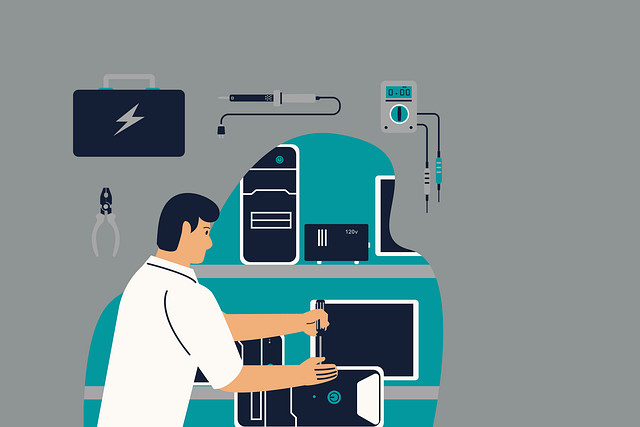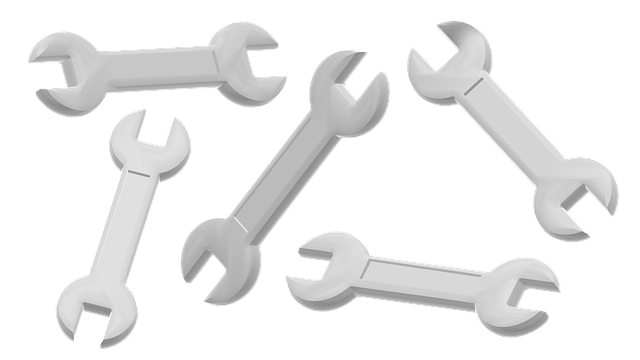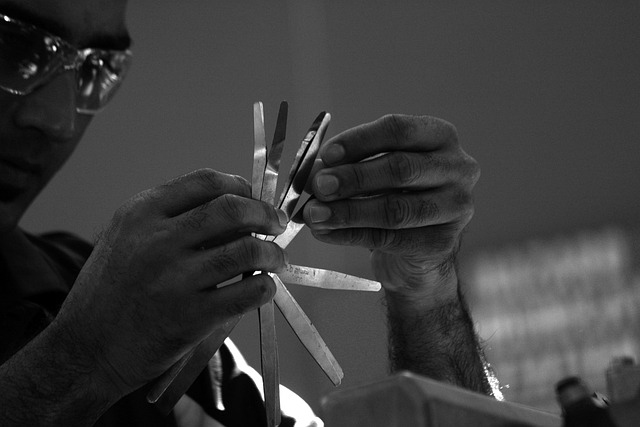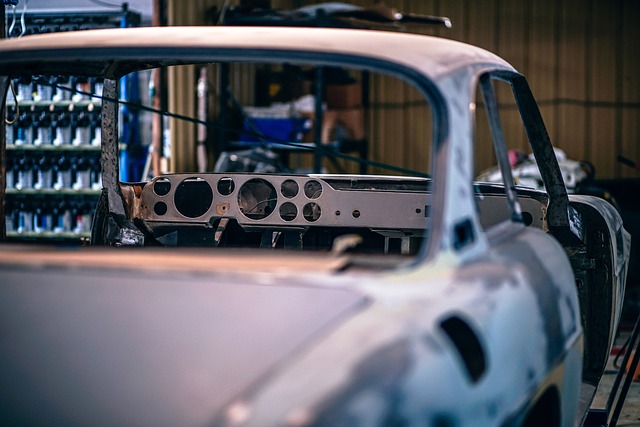Mercedes Driver Assistance Repair: Adhering to Guidelines for Effective Solutions
Mercedes driver assistance repair requires skilled professionals to fix sensor, camera, and software…….
In an era where autonomous vehicles are rapidly transforming the automotive landscape, Mercedes-Benz stands at the forefront of innovation with its cutting-edge driver assistance systems. “Mercedes Driver Assistance Repair” (MDAR) is a multifaceted field that encompasses the maintenance, troubleshooting, and enhancement of these advanced technologies designed to improve safety and driving dynamics. This article aims to provide an in-depth exploration of MDAR, shedding light on its intricacies, global impact, technological advancements, and future potential. By delving into these aspects, we will empower automotive professionals and enthusiasts alike to grasp the significance of this evolving domain.
Definition:
Mercedes Driver Assistance Repair refers to the specialized process of servicing, repairing, and upgrading driver assistance systems (DAS) found in modern Mercedes-Benz vehicles. DAS is an umbrella term for a suite of electronic systems designed to support or partially automate various driving tasks, enhancing safety and comfort.
Core Components:
Historical Context:
The concept of driver assistance systems has evolved significantly over the past decade, driven by advancements in sensor technology, computing power, and software engineering. Mercedes-Benz was one of the pioneers in this field, introducing its first DAS in 2006 with the S-Class. Since then, the company has continuously refined and expanded its driver assistance portfolio, keeping pace with industry standards and regulatory requirements.
Significance:
MDAR is crucial for several reasons:
The impact of Mercedes Driver Assistance Repair is felt worldwide, with varying trends and adoption rates across regions:
| Region | Key Trends | Market Dynamics |
|---|---|---|
| North America | Strong focus on advanced driver-assistance systems (ADAS) due to stringent safety regulations. High demand for features like ACC and LKA. | The market is mature, with established players offering a wide range of DAS solutions. Focus on integration with smartphone connectivity and over-the-air updates. |
| Europe | Strict European Union regulations drive the adoption of ADAS. Countries like Germany and Sweden lead in innovation and testing. | A highly competitive market with numerous automotive giants investing heavily in MDAR technology. Standardization efforts aim to ensure interoperability. |
| Asia-Pacific | Rapid growth due to increasing vehicle sales and a young driving population. China, in particular, is a hub for ADAS development. | Local automakers are catching up with international brands, offering competitive DAS packages at affordable prices. Government incentives promote the adoption of safety features. |
| Latin America | Growing awareness and demand for safety features, particularly in urban areas. | The market is fragmented, with varying levels of DAS availability across vehicle segments. Collaboration between automakers and technology providers is on the rise. |
Market Dynamics:
The global MDAR market is experiencing steady growth, driven by the increasing penetration of driver assistance systems in new vehicles and the rising demand for retrofitting older models. According to a recent report by Grand View Research, the global ADAS market size was valued at USD 37.9 billion in 2021 and is expected to grow at a compound annual growth rate (CAGR) of 26.4% from 2022 to 2030.
Investment Patterns:
Major automakers are investing substantial sums in R&D for MDAR, aiming to stay ahead of the curve. This includes partnerships with technology companies and startups specializing in autonomous driving and advanced safety features. For instance, Mercedes-Benz has collaborated with Waymo on projects related to sensor fusion and predictive analytics for DAS.
Economic Impact:
Recent Progress:
Future Potential:
Governing Bodies:
Key Regulations:
Influence on MDAR Development:
Regulations drive innovation by pushing automakers to develop more advanced and reliable DAS. This, in turn, creates a demand for enhanced repair and maintenance services to ensure compliance. Standardization efforts also promote interoperability, making it easier for repair technicians to work with different vehicle systems.
Main Issues:
Proposed Solutions:
Case Study 1: Mercedes-Benz S-Class with Active Lane Change Assist (ALCA)
A premium sedan equipped with ALCA was involved in a high-speed collision where the system was believed to have failed, causing the vehicle to veer into nearby traffic. Upon investigation, technicians discovered that while the sensors detected a suitable lane change opportunity, the software had incorrectly interpreted the scenario due to a glitch. The repair involved a software update and sensor recalibration, demonstrating the importance of precise diagnostics and OTA updates in MDAR.
Case Study 2: Retrofitting Blind Spot Monitoring (BSM) for Fleet Vehicles
A logistics company wanted to enhance the safety of its fleet by retrofitting BSM on older models. They partnered with a specialized MDAR service provider, who installed advanced camera systems and software algorithms to achieve accurate blind-spot detection. The project resulted in a significant reduction in rear-end collisions and improved driver satisfaction, showcasing the potential of MDAR for fleet optimization.
Case Study 3: Enhancing Pre-Safe System Performance
A technician discovered that a particular model’s Pre-Safe system was not deploying airbags appropriately during low-speed collisions. Through rigorous testing and data analysis, they identified a software bug causing a delay in airbag deployment. The fix involved an updated firmware patch, emphasizing the role of MDAR technicians in refining safety systems.
Emerging Trends:
Growth Areas:
Strategic Considerations:
Mercedes Driver Assistance Repair is a dynamic field that continues to shape the future of automotive technology and safety. As MDAR evolves, it offers immense potential to enhance driving experiences, improve road safety, and contribute to sustainable mobility solutions. By addressing challenges, embracing technological advancements, and adhering to regulatory frameworks, the global MDAR community can ensure that driver assistance systems reach their full potential, making our roads safer for everyone.
Q: What is the main purpose of Mercedes Driver Assistance Repair?
A: The primary goal is to maintain, repair, and enhance driver assistance systems (DAS) in Mercedes-Benz vehicles, ensuring optimal performance and safety.
Q: How does MDAR differ from traditional automotive repairs?
A: MDAR focuses on complex electronic systems and software, requiring specialized skills and knowledge. It goes beyond conventional mechanics to include sensor calibration, diagnostic coding, and over-the-air updates.
Q: Are there any safety risks associated with MDAR?
A: If not performed correctly, certain DAS repairs could pose risks. For example, incorrect sensor calibration might lead to false readings, affecting system performance. That’s why specialized training and strict protocols are essential.
Q: Can MDAR systems be updated remotely?
A: Yes, Over-the-Air (OTA) updates are a significant aspect of MDAR. Vehicles equipped with this feature can receive software improvements without the need for physical visits to workshops, ensuring optimal system functionality.
Q: How does MDAR contribute to sustainable mobility?
A: By improving vehicle safety and efficiency, MDAR promotes safer driving practices and reduces the environmental impact of transportation. Advanced driver assistance systems can lead to lower fuel consumption and fewer accidents, both vital aspects of sustainable mobility.

Mercedes driver assistance repair requires skilled professionals to fix sensor, camera, and software…….

Mercedes Driver Assistance Repair (DAS) requires specialized technicians who calibrate sensors, soft…….

Mercedes driver assistance systems, critical for modern auto safety, utilize sensors, cameras, and r…….

Mercedes driver assistance repair services are crucial for maintaining advanced safety features in M…….

Mercedes driver assistance repair leverages advanced sensors, cameras, and radar technology integrat…….

Mercedes driver assistance repair for Distronic and Collision Avoidance systems is vital for safety…….

Mercedes driver assistance repair is a specialized service for advanced safety and comfort systems i…….